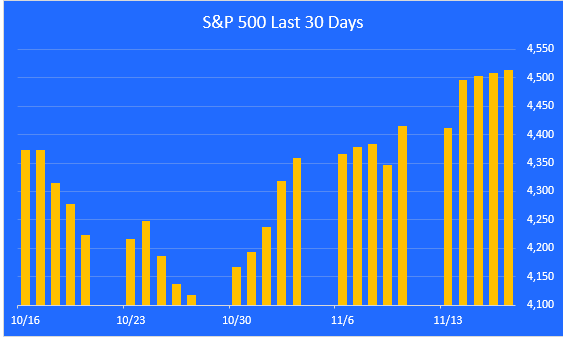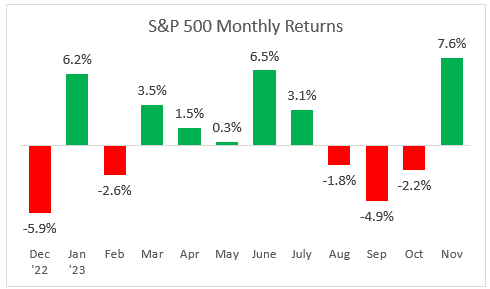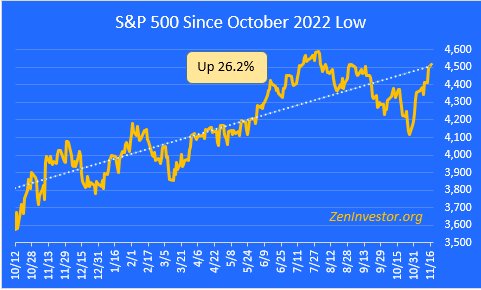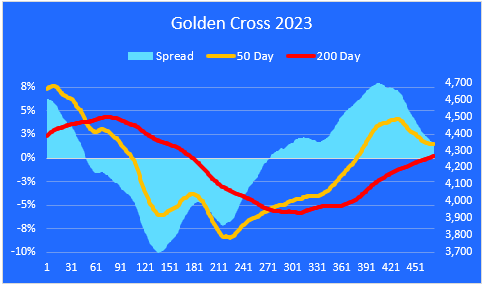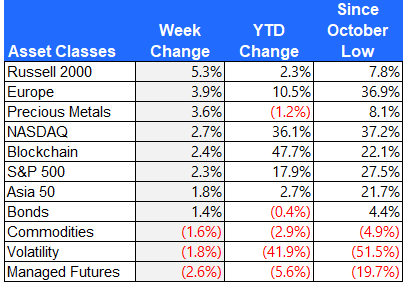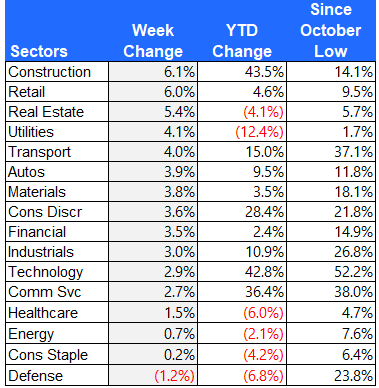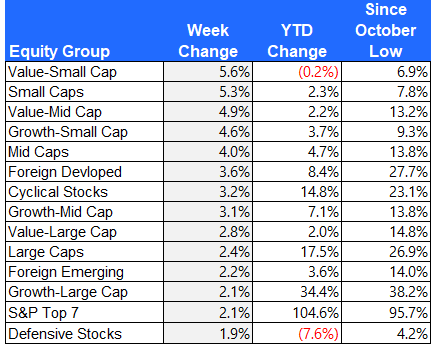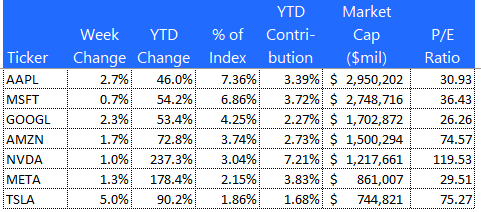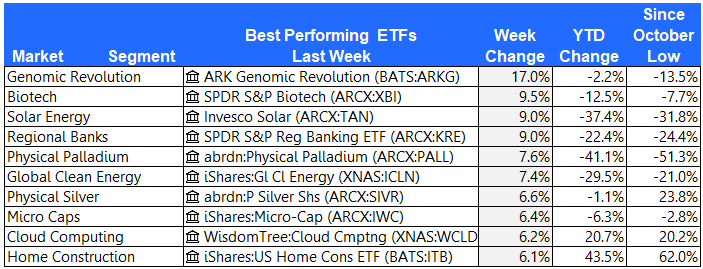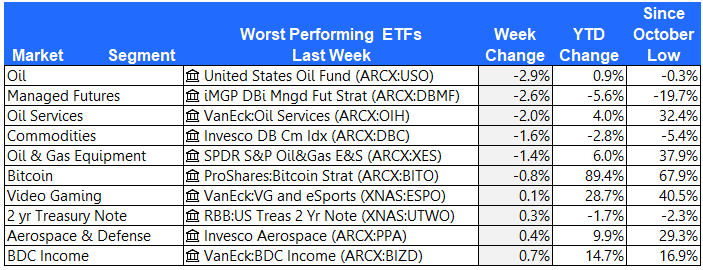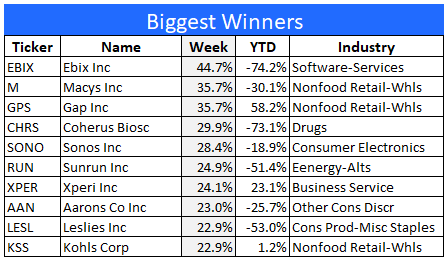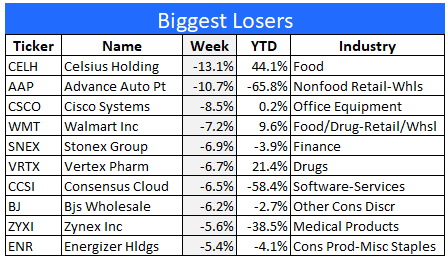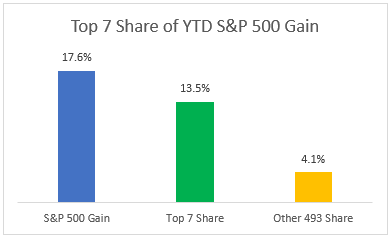In this weekly market report, we look at the various asset classes, sectors, equity categories, and exchange-traded funds (ETFs) that moved the market higher and the market segments that defied the trend by moving lower.
Identifying the winners and losers allows us to see the direction of significant money flows and their origin.
The S&P 500 had another strong week.
For the week, the S&P 500 was up 2.2%. After three consecutive up weeks, we are now just 1.6% below the 2023 high water mark, set on July 31. We are 5.9% below the all-time high set on January 2, 2022.
A look at monthly returns.
This chart shows the monthly returns for the past year. November is off to a strong start, after losing ground in August, September, and October.
The bull market is now above the long term trend line.
This chart highlights the 26.2% gain in the S&P 500 from the October 2022 low through Friday's close. We made considerable progress last week and moved above the long term trend line.
The Golden Cross.
The market entered a Golden Cross configuration (a Golden Cross occurs when the 50 day moving average crosses above the 200 day) on February 2, 2023.
The spread between these two moving averages continues to narrow. Today it stands at 1.7%, below the long term average of 2.3%.
Major asset class performance.
Here is a look at the performance of the major asset classes, sorted by last week's returns. I also included the year-to-date returns as well as the returns since the October 12, 2022 low for additional context.
The best performer last week was the small cap Russell 2000, as investors sought bargains among the asset classes that have lagged this year.
The worst performing asset class last week was Managed Futures. These hedging vehicles tend to be short the market.
Equity sector performance
For this report I use the expanded sectors as published by Zacks. They use 16 sectors rather than the standard 11. This gives us added granularity as we survey the winners and losers.
Construction stocks and Retailers had a very good week, as mortgage rates cooled sharply from their recent runup.
Defense stocks lagged behind, giving back some of their recent gains.
Equity group performance
For the groups, I separate the stocks in the S&P 1500 Composite Index by shared characteristics like growth, value, size, cyclical, defensive, and domestic vs. foreign.
All of the equity groups gained ground last week. The best performing groups were small and mid cap stocks. Market participation has broadened once again, which is a healthy sign for the market.
The S&P Top 7
Here is a look at the seven mega-cap stocks that have been leading the market all year. These seven stocks account for 77% of the total YTD gain in the S&P 500. That's down from 87% just four weeks ago, providing evidence that participation in the bull market is broadening once again.
The 10 best performing ETFs from last week
Cathie Wood, the brain behind the ultra-high beta ARK funds, is having a very good run, capturing the top spot on the ETF leader board three weeks in a row.
The 10 worst performing ETFs from last week
Oil gave back some recent gains, and managed futures were caught leaning short into a rising market.
The 10 best performing stocks from last week
Here are the 10 best performing stocks in the S&P 1500 last week.
The 10 worst performing stocks from last week
Here are the 10 worst performing stocks in the S&P 1500 last week.
Final thoughts
The S&P Top 7 stocks continue to dominate the market. As the following chart shows, these seven mega-cap tech stocks account for 77% of the S&P 500 YTD gain.
Since the recent market peak on July 31, the S&P 500 is down 1.6% and the Top 7 cohort is up by 2.5%. After several weeks of narrowing market participation, it now looks like leadership is beginning to broaden again. This can be seen in the performance of small and mid cap stocks, which have recently been outperforming large caps.
As this market pullback continues to play out, I will be paying close attention to what's happening with the Top 7. For now, at least, they still call the tune.

